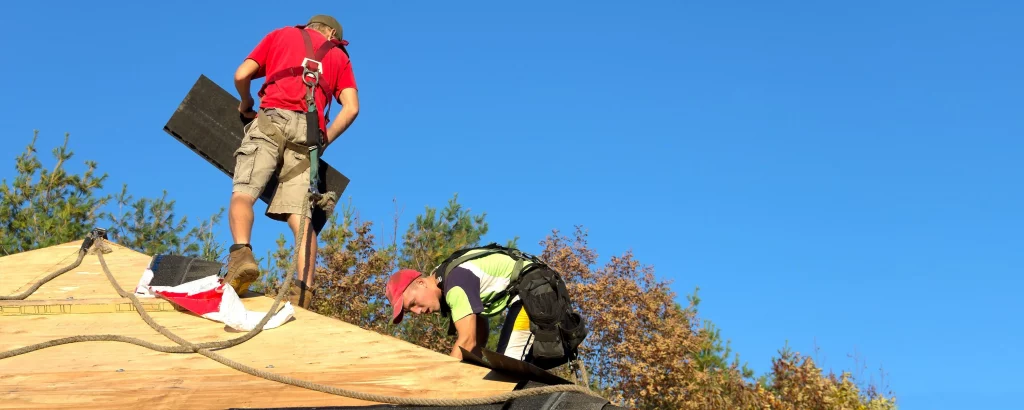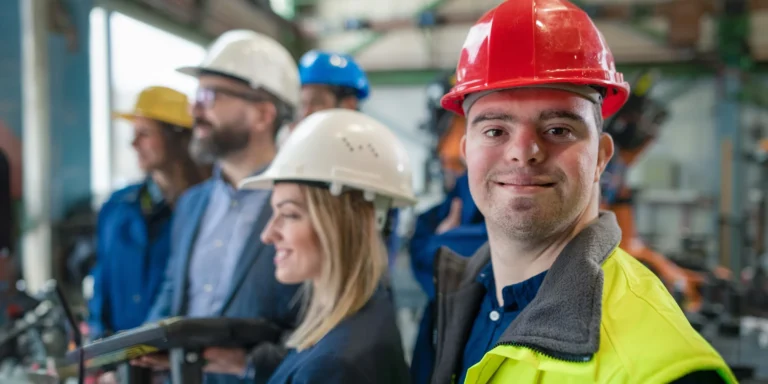This blog originally appeared on the Training ABC website. It is reprinted with permission.
Every year over 200,000 workers suffer injuries that require days off from work. According to the National Safety Council, fall injuries cost businesses 70 billion dollars annually in workers’ compensation and medical expenses.
OSHA requires that employers provide training for all workers who might be exposed to fall hazards.
Causes of Falls
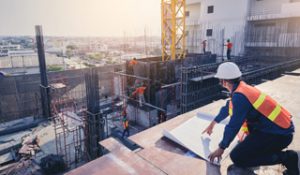
An unprotected side or edge at elevation can cause an employee severe injury or even death. Falls can occur from uncovered holes, walkways and temporary floor openings, trap doors or chute openings.
Falls can also occur when fall protection equipment is not properly used or fall hazard safeguards are not properly administered.
How to Prevent Falls
This program provides training for Industrial and Construction workers who are exposed to fall hazards. It will cover the similarities in standards while also underlining the differences.
Specifically this program will cover:
- OSHA Fall Protection Requirements
- General Industry Fall Protection Standards
- Construction Fall Protection Standards
- Different Types of Fall Protection
- Personal Fall Arrest System (PFAS)
- The Components and Standards for PFAS
- Falling Objects
- Training Requirements
Fall Protection Standards
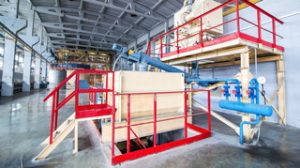
Employers must provide fall protection for any employee on a walking-working surface with an unprotected side or edge at the elevated height level required for their industry.
The standard for General industry is four feet or higher above or below a working level to protect from fall hazards and falling objects. The standard for construction is six feet. For some construction situations the height requirement for protection may vary. Organizations must know their specific industry standard and maintain proper fall protection.
For construction, open-sided walls, floors, holes, walkways, ladder ways or platforms must be properly guarded when there is a six-foot drop or more.
For General Industry, the standard is four feet. These areas must be guarded by either a standard rail and toe board, picket fence, swinging gate, equivalent barrier or person unless it’s an entrance to a ramp, stairway, or fixed ladder.
Provide the same safeguards at any height when adjacent, above, or below moving or hazardous equipment to protect workers from falling into machinery and falling objects.
Guard every hole, chute, trapdoor and temporary floor opening that is infrequently used with a standard cover, attendant or standard removable railings on all exposed sides. Floor openings 12 inches or larger in dimension, should be covered or guarded to prevent tripping or falling as well as preventing materials from falling into that area.
Before employees can begin work, employers must decide if the walking-working surface can safely support employees and their tools and provide protection.
Employers must also stipulate which work tasks should not utilize fall protection where it’s impractical or creates a greater hazard to use conventional fall protection equipment. When recommended strategies aren’t beneficial, employers may customize a program for employees while still following OSHA guidelines.
And each fall protection option has very specific OSHA requirements to follow.
Guardrails
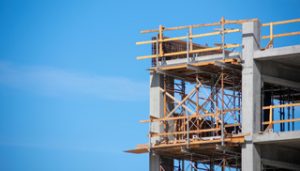
A guardrail system places a barrier next to an unprotected or exposed side, edge or other area of a walking-working surface to prohibit workers from falling to a lower level.
When working with a guardrail system, the OSHA standard for the top rail is between 39 and 45 inches above the walking or working surface. The rail must be at least 1/4 inch thick, and must withstand the force of at least 200 pounds applied within 2 inches of the top edge in any outward or downward direction, at any point along the rail.
When cable is used as the top rail, flag it at not more than six feet intervals and with highly visible material. When cable is used as the top rail, use highly visible material to flag it at not more than six feet intervals. Mid rails must also be at least 1/4 inch thick. They must be half the distance from the walking or working surface to the top of the top rail.
Intermediate members, solid panels, mid rails and screens must be capable of bearing 150 pounds of pressure in any outward or downward direction. Intermediate vertical members must be installed no more than 19 inches apart.
Guardrails surfaces must be smooth with rails that don’t extend past the terminal post. Guardrails surrounding access areas must have a self-closing gate that slides or swings away from the hole or access point and must be offset to stop accidental walking into the hole.
Safety Net Systems
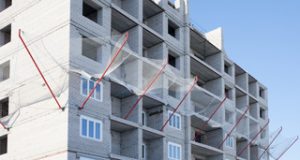
When using safety net systems, set up units as close as feasible under the walking-working surface, and never exceed more than 30 feet below that level.
Each net mesh opening may be no wider than 6 inches on any side. Safety nets must have a border rope for webbing with a minimum breaking strength of 5,000 pounds. Safety nets must be drop tested at the work site after the installation, whenever relocated, after major repair and every six-months if left in one location.
Inspect nets for wear, damage and deterioration on a weekly basis. Remove defective nets from service.
Covers
Covers are used to keep employees from falling through holes in walking working surfaces. A cover must support at least twice the axle weight of the largest vehicle that could drive over it and two times the combined weight of employees with their equipment.
The cover should be properly secured to prevent any accidental movement. Mark the cover with the word “covered” or “hole.”
Personal Fall Protection Systems
Examples of personal fall protection systems include personal fall arrest systems or PFAS, positioning systems, and travel restraint systems. A PFAS is a protective mechanism that stops or arrests a fall before a worker touches a lower level.
It has an anchorage, a body harness, and connector and can also have a lifeline, lanyard deceleration device, or other useful combination. All components of the system are required to withstand the amount of impact forces to stop an employee that is falling. Ropes, lanyards, and harnesses used for personal fall protection must be compatible with all connectors used.
Personal Fall Arrest Systems Requirements
OSHA requires personal fall arrest systems to:
- Limit the maximum arresting force on an employee in a body harness to 1800 pounds.
- Support an employee having a combined body and tool weight of less than 310 pounds.
- Be set up so an employee cannot freefall more than six feet or touch a lower level.
- Bring an employee to a complete stop and limit the deceleration distance the employee travels to three and a half feet.
- Be capable of bearing twice the potential impact energy of an employee free-falling six feet, or the freefall distance permitted by that system. Whichever is less.
- Suspend the employee inside the system without making contact with the employee’s neck or chin.
- Be inspected prior to each use for wear, damage and any deterioration along with all other fall protection equipment.
- Have defective parts removed from use.
- Be used, stored, and replaced according to the manufacturer’s guidelines.
- Not attach any PFAS to guardrails, roof edges, hoists or anything that causes you to swing.
- Bar workers from using body belts as part of a personal fall protection system as they are not designed to protect workers from falls.
Anchorage
An anchorage must support 5,000 pounds per employee or be designed, installed and used when supervised by a qualified person as part of their complete PFAS system with a safety factor of 2. Qualified persons must have a recognized degree or professional certificate with extensive knowledge and experience in this subject field.
Look to establish an anchor point on items that are structural such as beams, columns and roof trusses. Avoid conduit PVC pipe, cross bracing, power lines, fences or handrails. Some handrails can hold 900 pounds of force but most are only required to hold 200. When installing your own anchors read the instructions on the anchor itself that tells you where you can install it and what types of tools and materials you’ll need to do the job.
Body Harness
A body harness must be capable of attaching to other components of the PFAS. Harness straps should make an X on the back, and not be twisted. The attachment point should be located in the center of the wearer’s back.
Make sure your harness fits snugly and chest strap is buckled in the front. If you fall forward, it will prevent you from falling out of the harness. Do not let the harness leg straps hang down unsecured. Fasten your leg straps on the harness. If you don’t, in the event of a fall, the harness will either hang you or you’ll go right through it.
Inspect your harness each time you put it on. Look at the webbing for cuts, frays, burns and tears. Also
look for things like weld splatters or anything that can compromise the unit.
Connectors
A connector is used to connect distinct components of the PFAS and positioning devices together. Connectors include D-rings and snap hooks that must have a minimum breaking point of 5,000 pounds. Connectors are required to be proof tested to a minimum-breaking load of 3,600 pounds without cracking, breaking, or suffering permanent deformation.
Snap hooks must be locking tight. If the snap hook is not of a locking type, do not connect directly to webbing, rope, wire rope, each other, a D-ring, another snap hook or connector attached to a horizontal lifeline or to any object that is incompatibly shaped, or dimensioned such that unintentional disengagement could occur.
Only snap hooks specifically designed by the manufacturer to connect to these items may be considered for that purpose. When connecting a snap hook specifically designed by the manufacturer for this purpose to another snap hook, that snap hook must also be designed for the same purpose.
Never engage or join two snap hooks that are each attached to retractable lines. Lifelines are used to connect other parts of a PFAS to the anchorage. Vertical lifelines must only be used by one person and with a rope grab. Horizontal lifelines must only be used as part of a complete PFAS. They must be designed, installed and used when supervised by a qualified person as part of their PFAS with a safety factor of 2.
Lanyards connect the body harness to an anchorage point. Lanyards are required to be constructed from synthetic material and have at least a breaking point of 5,000 pounds per employee. Shock absorbing lanyards should provide deceleration devices to slow a fall to reduce body trauma.
Self-retracting lifelines provide a braking mechanism that is activated when line is released too fast. Wrapping a lanyard around an anchor point such as a beam and attaching the lanyard to itself is called “choking off.” Do not “Choke off” unless you are using a device specifically manufactured for this purpose.
Also, the flange of the beam can bump against the gate and open it, releasing the worker from the protective device.
Calculating Fall Distance
Total fall distance (TFD), is the distance between the anchorage point and closest obstruction. To calculate TFD, add the length of the lanyard plus the deceleration distance, plus the height of the worker plus the safety factor.
OSHA’s maximum deceleration distance is 3.5 feet. The height of a worker is measured from the D-ring on the upper back on the body harness to the walking or working level, normally 4 to 5 feet. A safety factor of at least 2 feet is mandated but three feet is suggested.
Commercial and industrial settings have many obstructions around making it a challenge to find the proper amount of unobstructed freefall space. On construction sites, new platforms are literally being built as employees work, continually changing the amount of freefall space.
It is a matter of life and death for all workers with potential fall hazards to be aware of their TFD and make appropriate modifications.
A Controlled Access Zone
A controlled access zone is a clearly marked, designated work area where certain types of work may take place without using conventional fall protection systems.
Controlled access zones require entry by authorized personnel only and are defined by a control line or other means to restrict access. Control lines act as visual warnings. They consist of ropes, wires, tapes and other materials with high visibility that clearly mark the area at no more than six feet intervals.
Control lines must be set up so that the lowest point including the sag, is not less than 39 inches from the working surface and high point not more than 45 inches. Control lines require a minimum breaking strength of 200 pounds.
Warning Line Systems
Warning line systems are primarily used on roofs to warn workers of unprotected sides or edges that are six feet or higher above a lower level. It designates an area where work may be performed without other fall protection systems.
The warning line consists of ropes, wires, or chains with minimum 500 pound tensile strength that are flagged with high visibility materials at six foot intervals. The work area must be surrounded by the warning line and be at least six feet from all sides.
The warning line must be between 34”-39” from working spaces. Individual sections must be independent of each other so if one is pulled one way, others aren’t affected. Workers are not allowed between the warning line and roof edge or hazard unless performing work.
When that occurs workers must still be protected by safety nets, guardrails, PFAS or a safety monitoring system. When machinery is used in the work area, the warning line must be stationed no less than six feet from the roof edge, parallel to the machinery’s line of travel. When perpendicular, it must be ten feet.
Safety Monitoring System
A safety monitoring system employs a competent person who oversees the safety of other workers. Safety monitors are skilled at recognizing fall hazards, warn employees as hazards emerge and caution workers when they’re acting in an unsafe way.
A safety monitor must be on the same working level, within viewing range of the employees being monitored, and be close enough to communicate orally. The safety monitor may not have other responsibilities that diverts focus from monitoring employees.
Falling Objects
Supply suitable head protection to all workers who are susceptible to falling objects. Employers are also required to protect workers from falling objects by applying one or more of these preventative safeguards:
- Build canopy structures, guardrails, screens, or toe boards to stop objects and debris from falling to lower levels.
- Keep tools and other objects away from openings and edges where they could fall to a lower level.
- Barricade those spaces into which objects could fall and prevent workers from entering those areas.
Training Requirements
Prior to any work, OSHA requires employers to train those who use fall protection and work in high hazard situations on fall prevention and protection systems and descent systems.
It must be provided to employees in a manner and language employees understand. Training must be performed by a qualified person knowledgeable in the nature of fall hazards and correct procedures for assembling, disassembling maintaining, storing, and inspecting the fall protection systems to be used.
Employers must prepare written certification of workers trained, with dates, training content and names and job titles of those conducting and attending the training.
Retrain employees when workplace changes make prior training obsolete, fall protection systems or equipment change, or employee’s skill shows a refresher is needed.
Consequences
OSHA’s analysis of falls from elevation shows worker’s compensation claims alone cost employers 50,000 per incident in general industries and 100,000 per incident in the construction industry. Employers also must compensate for medical expenses, and hire replacements. The company loses productivity, reputation and is often fined for violating safety measures. Employees endure bodily injuries, emotional trauma and financial loss.
Conclusion
Falls are a major safety issue, and using the right protection systems for each job is necessary to ensure your safety. Be mindful and always take proper precautions to save your life and the lives of your coworkers.
The greatest function of these OSHA mandated rules is to ensure that workers on the job go home to their families every night.
Since 1995, TrainingABC has created video based training courses for compliance, leadership, management, customer service and much more.
